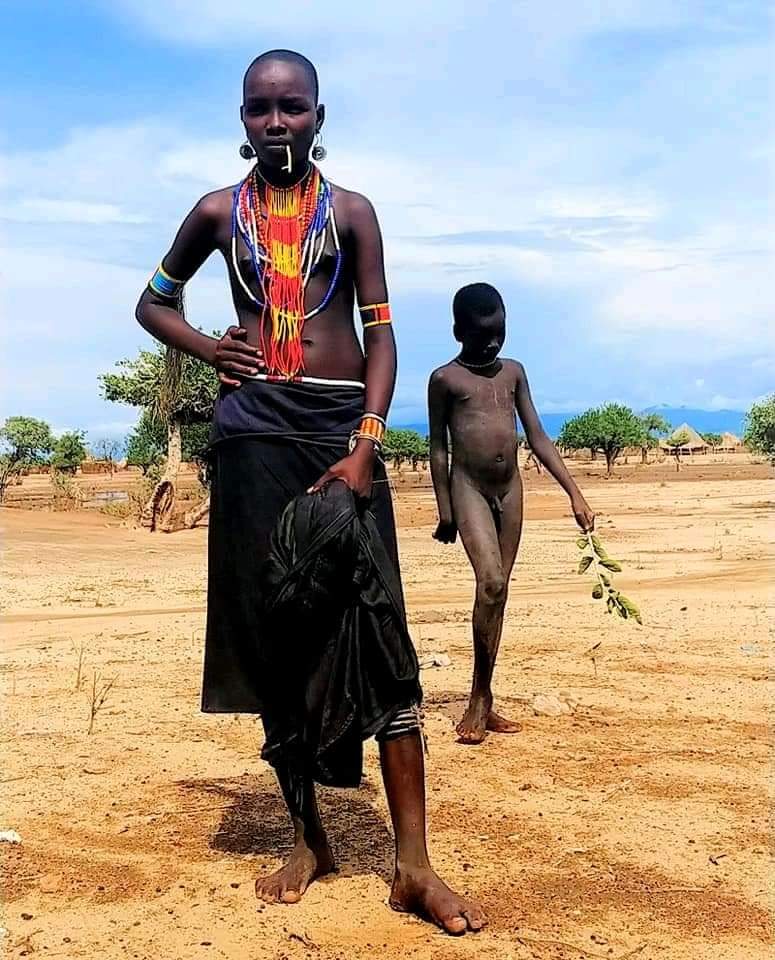Arbore is also known as Ulde, Arbore is both the name of a tribe and a village in the Omo Valley, Ethiopia. “Ar” means bull and “Bore” means earth. For the people Arbore means “Land of the bulls”. The village of Arbore is located 50 km south of Weyto on the Turmi road, west of the Weito River and north-east of Lake Chew Bahir or Lake Stefany.
As you venture into the land of the Arbore tribe, the village will appear in the surrounding arid landscape. It is a traditional village built entirely of papyrus. It’s a sight to behold! There is also a relatively large clinic, a police station and a small church. These structures add a touch of modernity to the traditional village.
There are actually four villages: Jellifa, Egudi, Gulama and Gondara’ba. Two on each side of the Woito River. Gondoroba is the largest village and has around 1,000 inhabitants. It is also where the tribal chiefs resided. When you arrive, you may notice that the area is quite barren and dusty, typical of the African savannah. It’s very hot. Temperatures can vary from 35 to 40°C.
The Arbore tribe is bordered to the north by Stemay, to the south by Chew Bahir Lake, to the east by the Weyito River, and to the south and southwest by Hamer. They were close to the Borena Oromos in language and culture, before reaching their current homeland, the Arbore, originating from Borena and Marle more than 200 years ago, a tribe that was located on the bank of the Omo. The Arbore tribe supports themselves as intermediaries, traders and mediators among the people of the Omo Valley. They usually trade with Kosno and Borena. The Arbore usually intermarry with other tribes such as the Guji and Borena Oromo, Hammer and Tsemai tribes.
Arbore tribe culture and lifestyle
The Arbore people are agro-pastoralists, relying on livestock rearing and farming as their primary means of sustenance. They maintain herds of cattle, sheep, and goats.
Their dietary staples consist primarily of sorghum, legumes, and pumpkins. The possession of a substantial number of cattle is indicative of wealth and social status, serving as a pride for families. They are rarely slaughtered, only for ceremonial reasons. Meat is almost exclusively consumed by goats and sheep.

When it comes to jewelry, both men and women are more likely to wear jewelry if they are not married. In fact, when women marry, they will begin to wear a leather-trimmed necklace around their waists.
Arbore tribe Men do not usually wear above the waist, but sometimes they may put on a t-shirt. Below the waist, they knit loose garments, mostly red, white, and black or blue, red, and gray stripes. Arbore Hero Man who killed an enemy will decorate His entire chest with scars. Handmade jewelry, such as bracelets, is widely used; On the neck, they wear darker ornaments made of different colors and earrings made of different shapes.
As they are young, children of Arbore, are used to working and know the significance of their contribution to the families. The children do not perceive their duties as a burden imposed upon them, but rather as an integral part of their daily lives. Young girls remain in the village to tend to their younger siblings and look after the goats, while young boys devote their time to animal husbandry and assist in warding off birds from the farm. Women Work, Women do house chores, including taking care of the children, water collection, and working on the farm. Men’s work is farming and looking after the animals, when it is a dry season Arbore Men’s may go very far looking for pasture. Sometimes they may stay in temporary camps.
